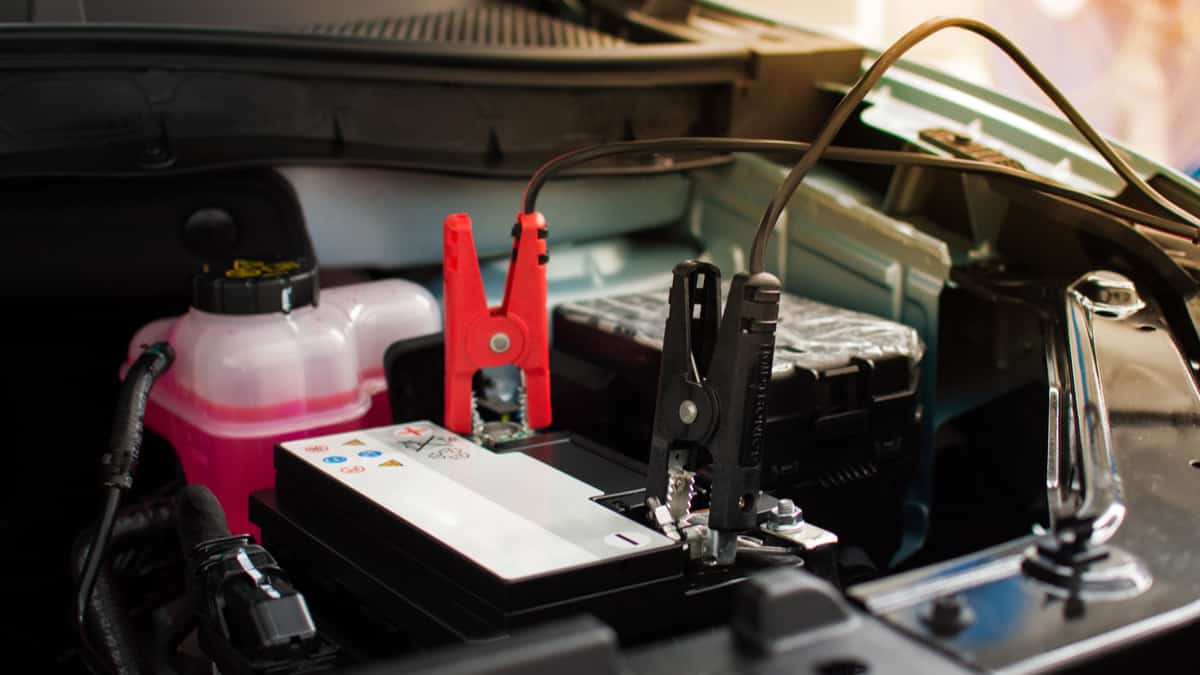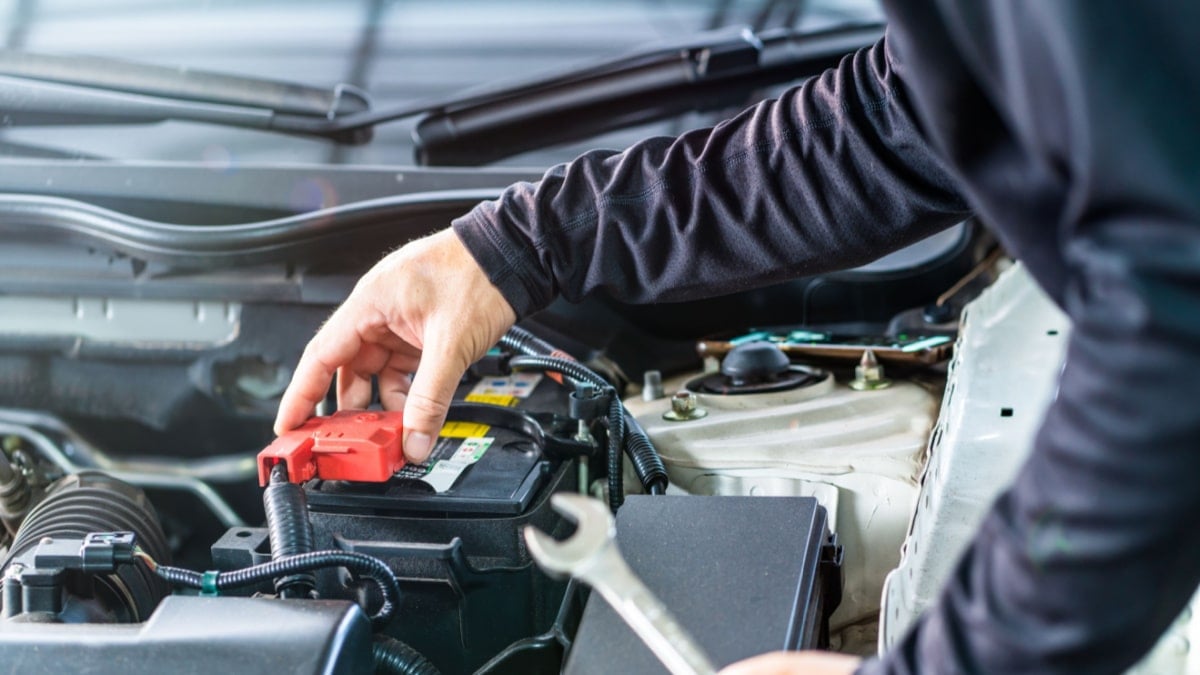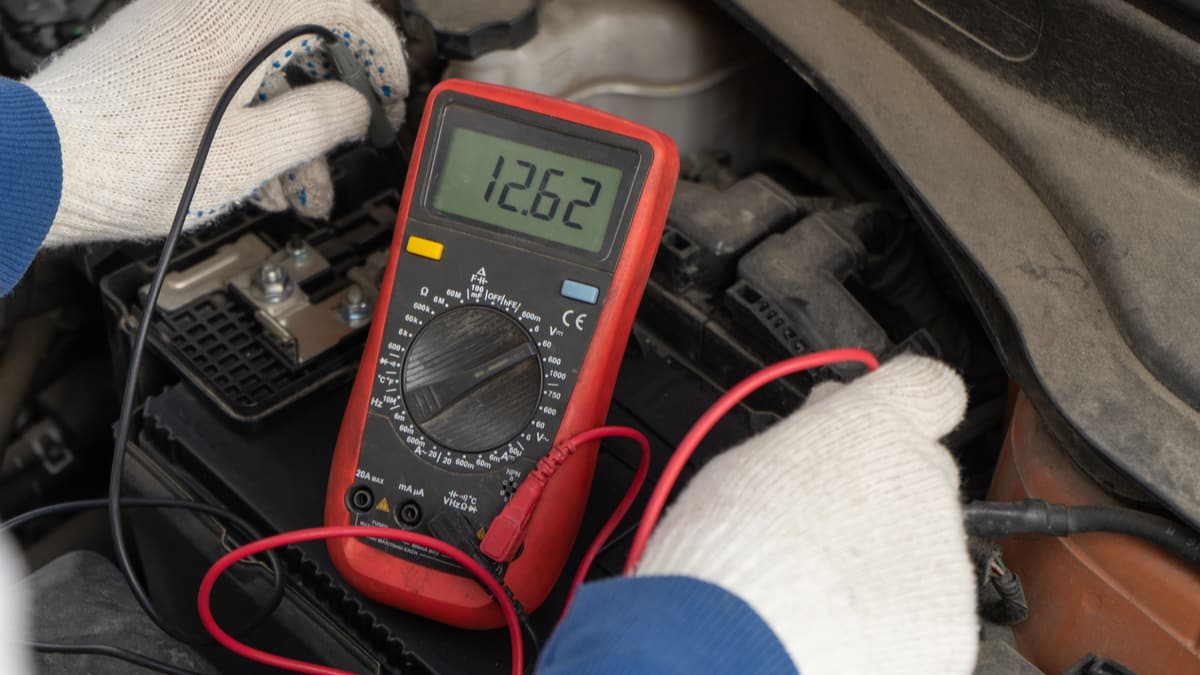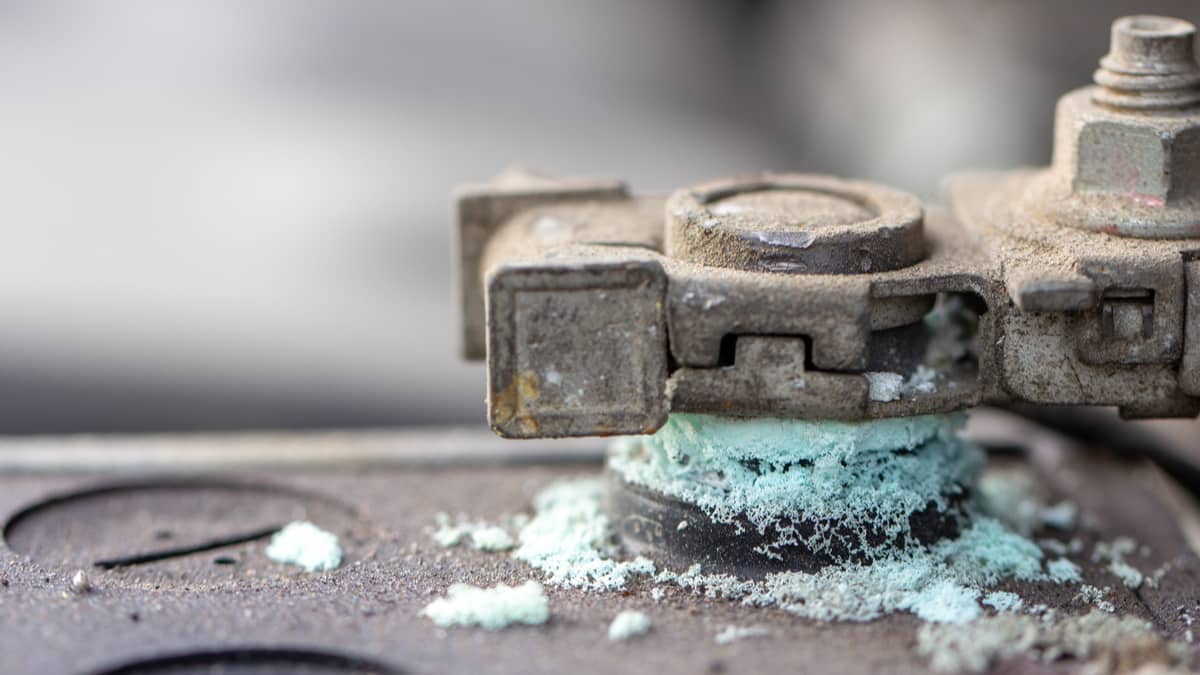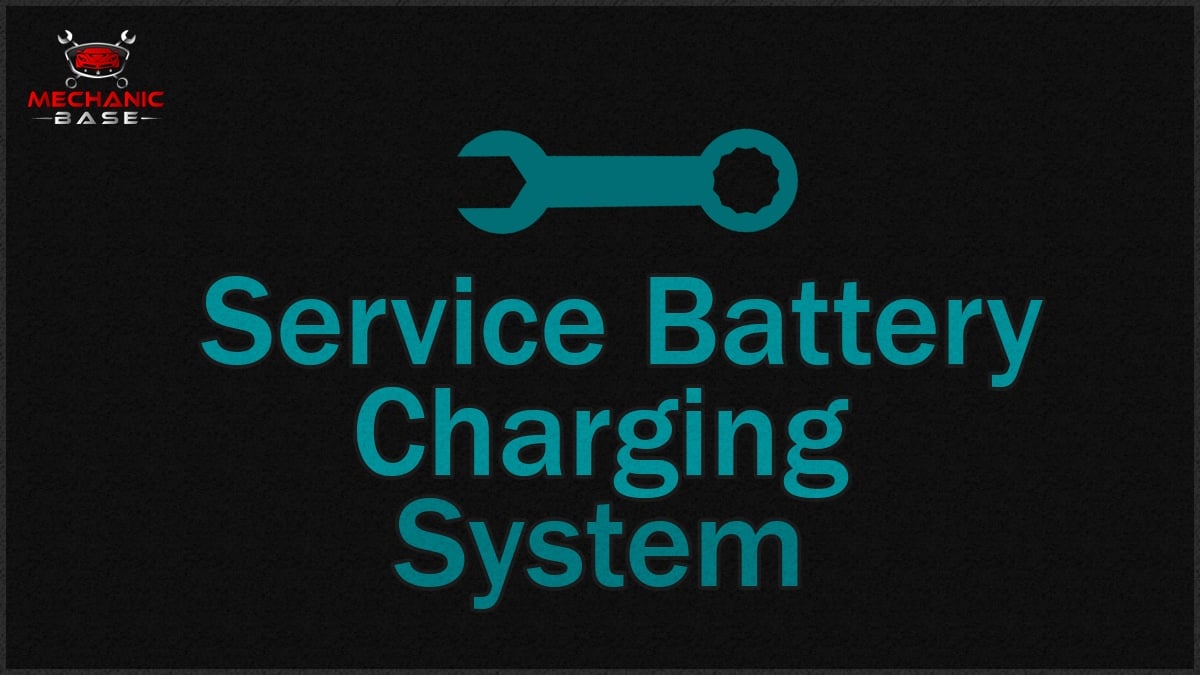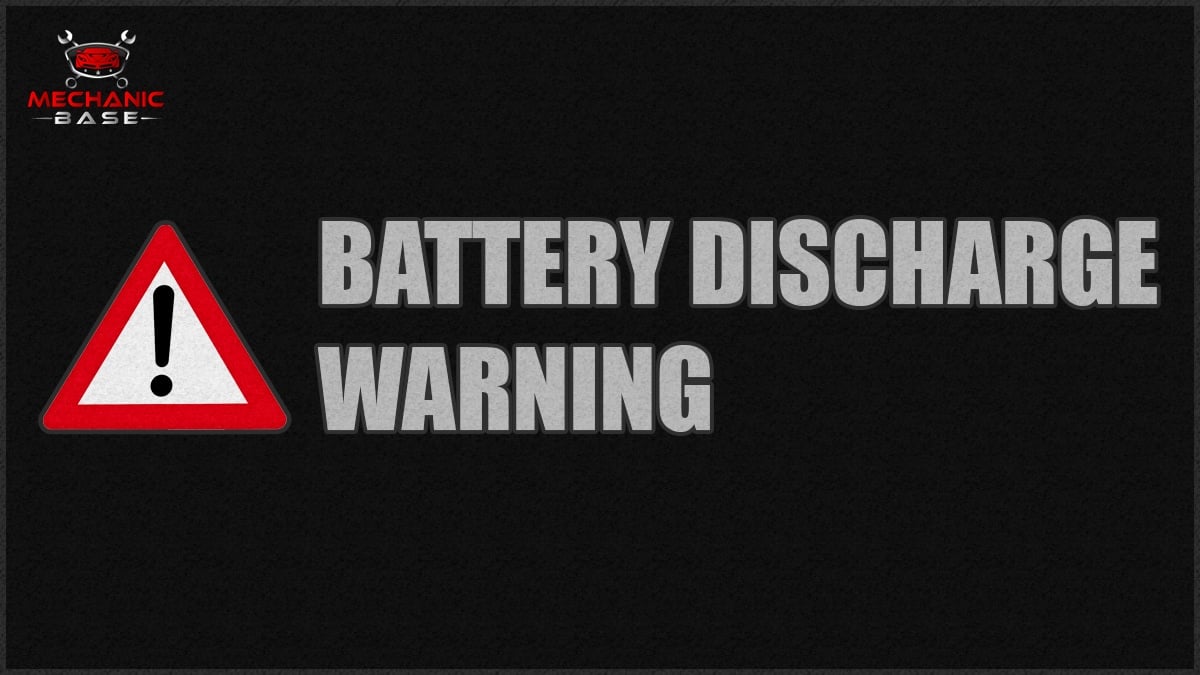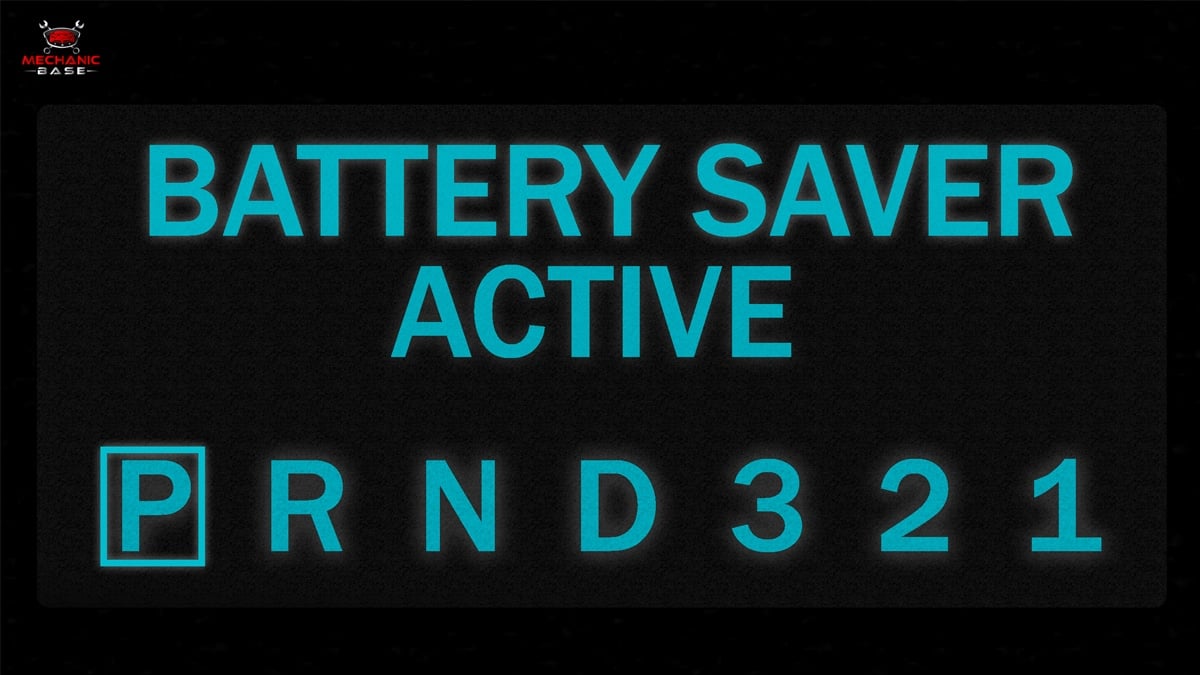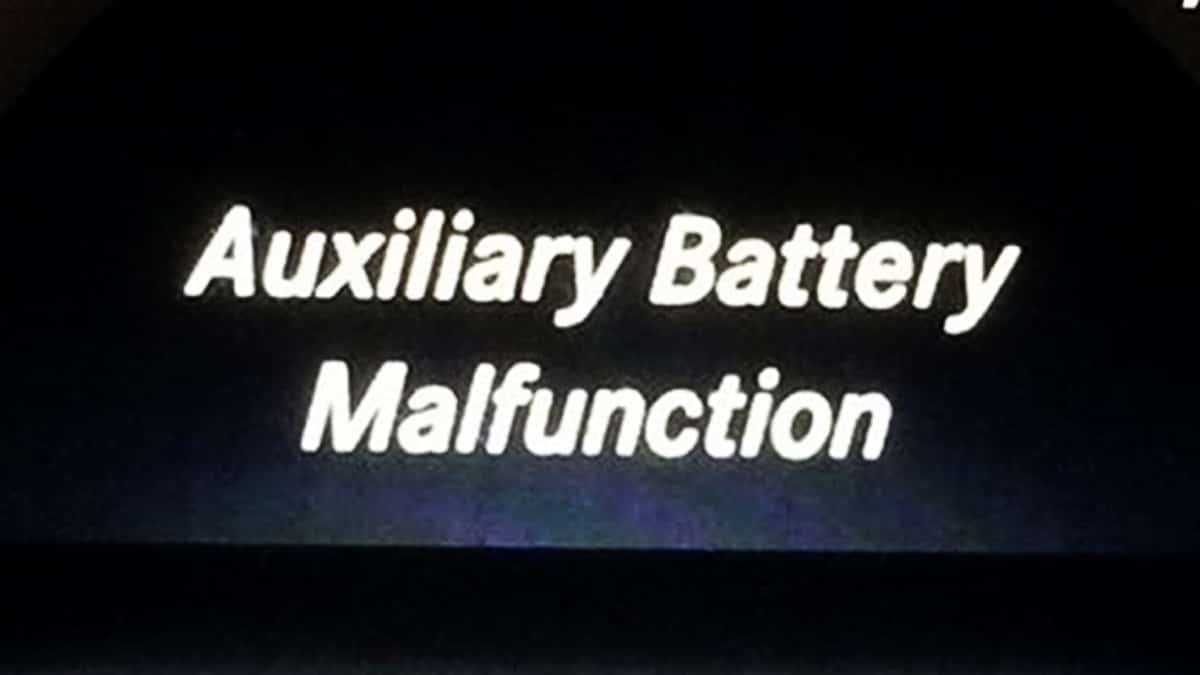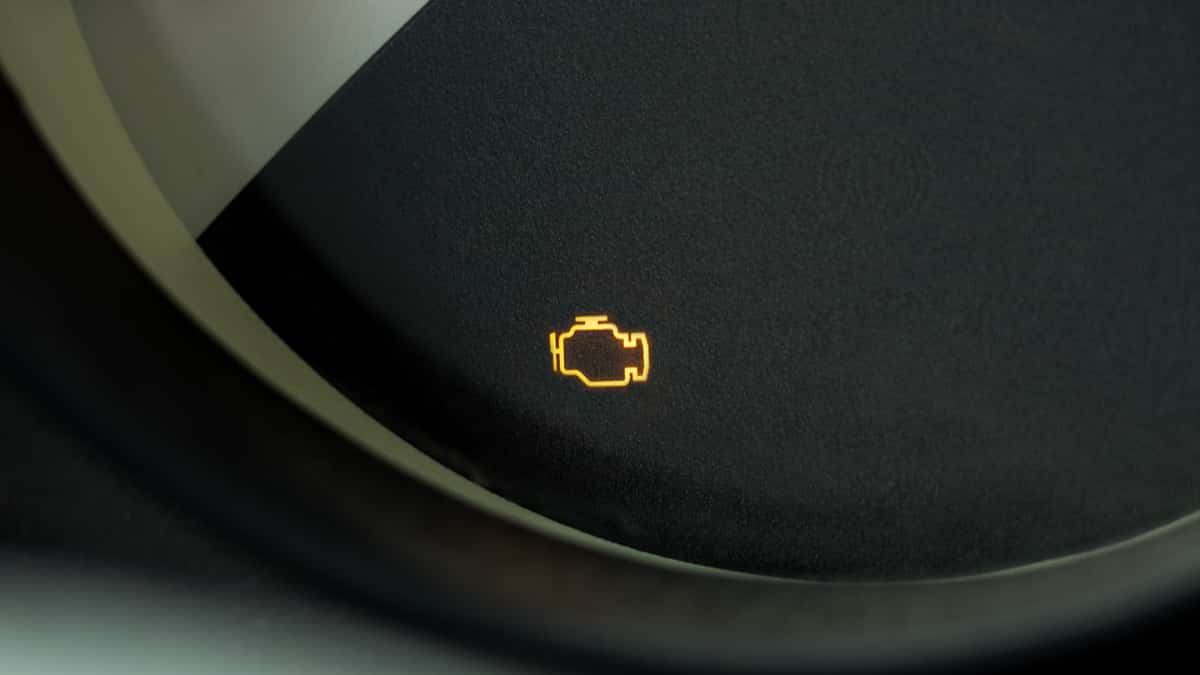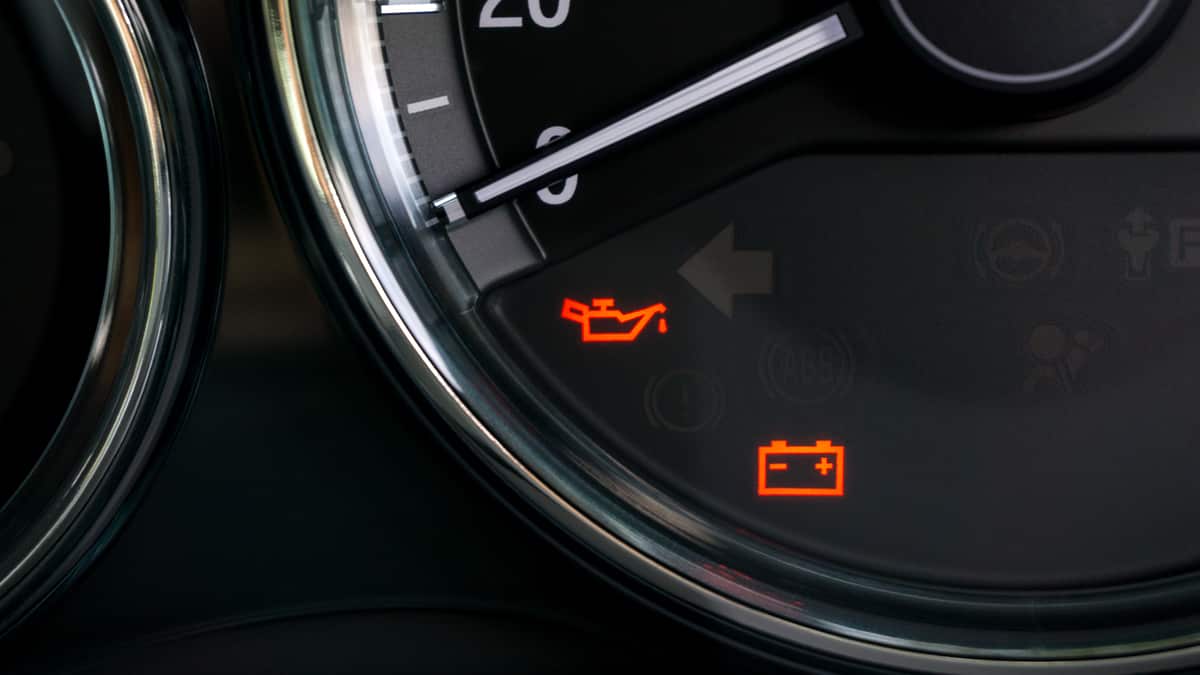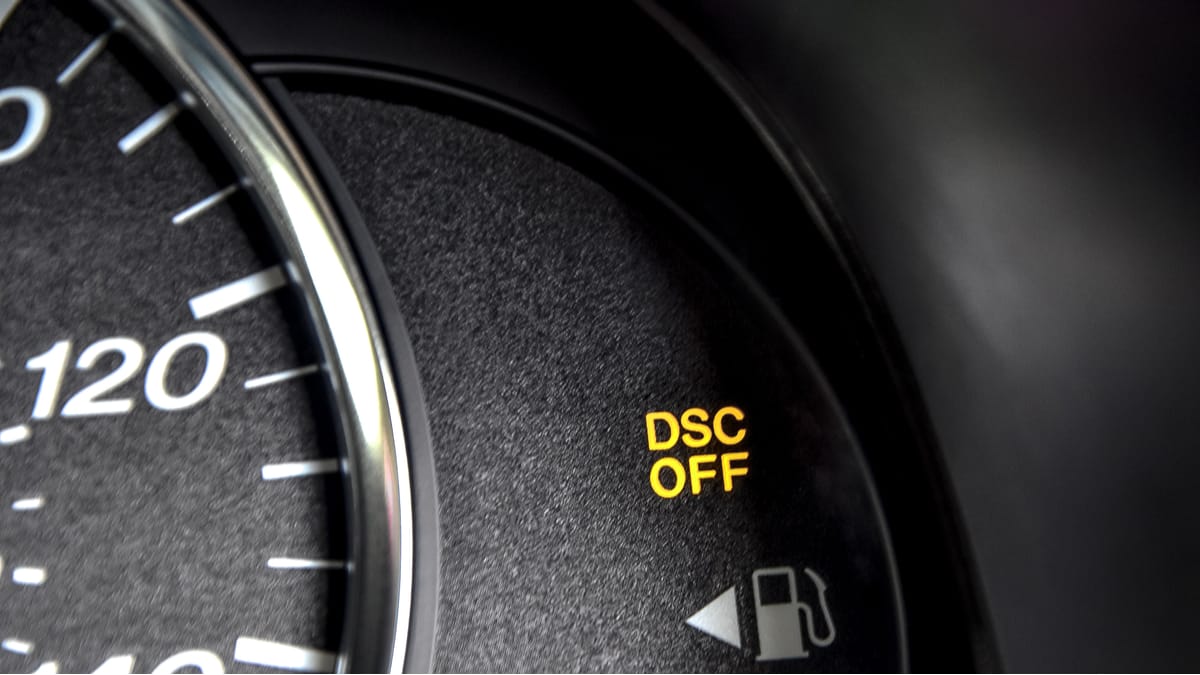When a dashboard warning light comes on, you should always take notice of what’s going on. With the battery light, you may not have much time left to figure out the problem before the car dies. That’s why you should diagnose the reasons the battery light is on while driving.
In our guide, we cover the top seven reasons for this warning light, especially while driving. We also show you what to do when it comes on. At the end of the article, you gain some answers to questions that have been on your mind.
Reasons Your Battery Light Is On While Driving
The battery light may be on because the alternator belt is broken or slipping. It could also be due to a worn alternator, a bad pulley or damaged wiring. There’s also the chance that the battery is bad, there’s corrosion on the terminals or the engine ground strap is bad.
Here’s our video with the reasons why your battery light is on, and we go into a little more detail below.
1. Broken Or Slipping Alternator Belt
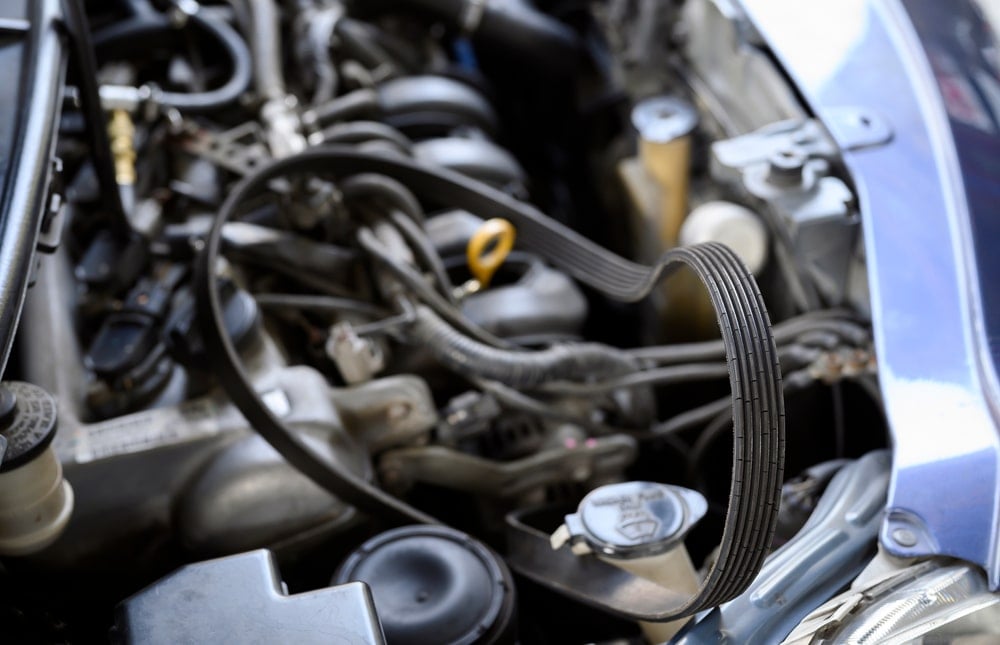
The serpentine belt is responsible for running the alternator along with other accessories. It will usually last 50,000 to 100,000 miles when it’s taken care of. If the serpentine belt begins to fail or it starts slipping, you are going to notice trouble running the alternator.
This problem also leads to a squealing noise, especially when it’s cold outside. You may also see flickering or dimming lights and the engine could stall if the battery dies completely.
2. Faulty Or Worn Alternator
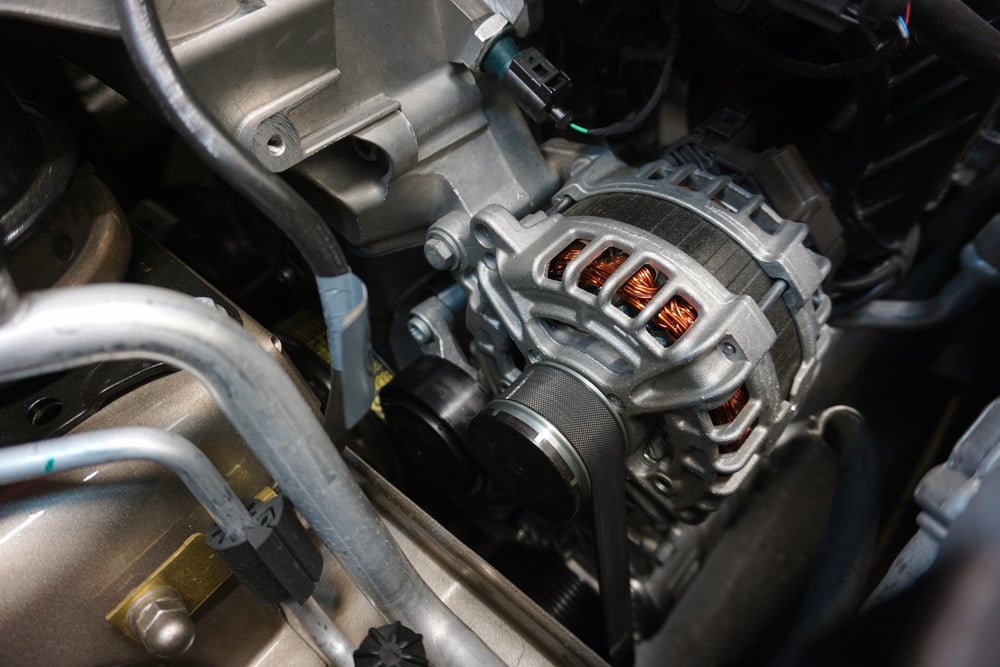
The alternator is responsible for charging the car battery while the engine is running. If the alternator is failing, the battery isn’t going to receive the power it needs. The alternator typically lasts 100,000 to 150,000 miles, so this isn’t a problem that should be dealt with often.
A dying alternator is going to give off several signs, including dimming headlights and malfunctioning electrical equipment. If it’s not resolved promptly, you will end up with a dead car battery.
3. Bad Alternator Pulley

The serpentine belt wraps around the alternator pulley as it weaves in and out of the various components. If the pulley is damaged or failing, it can cause a lot of problems with the belt, which turns into issues with the alternator.
The first sign that something is wrong with the pulley may be a damaged belt. If the belt is getting caught or worn against the pulley, you will see some damage. You may also see physical damage to the pulley if you perform an inspection. Along with burning smells and unusual noises, you should also watch out for the typical signs of a dying car battery.
4. Bad Alternator Wiring
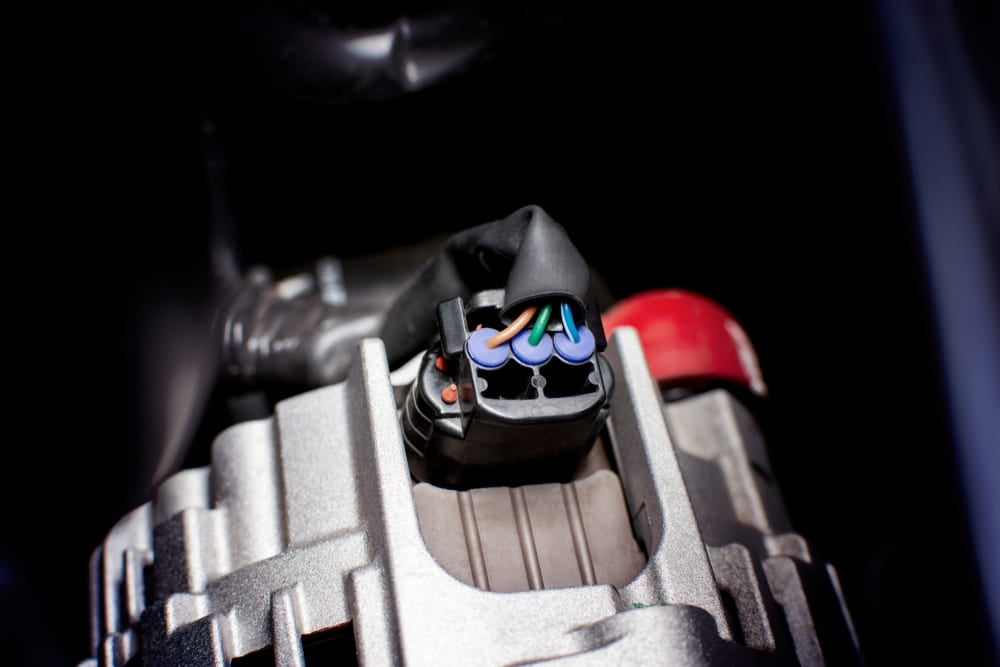
The alternator provides power to the car battery, but it can’t do this without the appropriate wiring and connections that voltage travels through. If the wiring becomes damaged or worn, the signals will become interrupted, leaving the battery without the charge it needs to operate.
What you will end up with is a dead car battery. This issue will also cause the battery light to come on, letting you know that it’s not charging.
5. Bad Battery
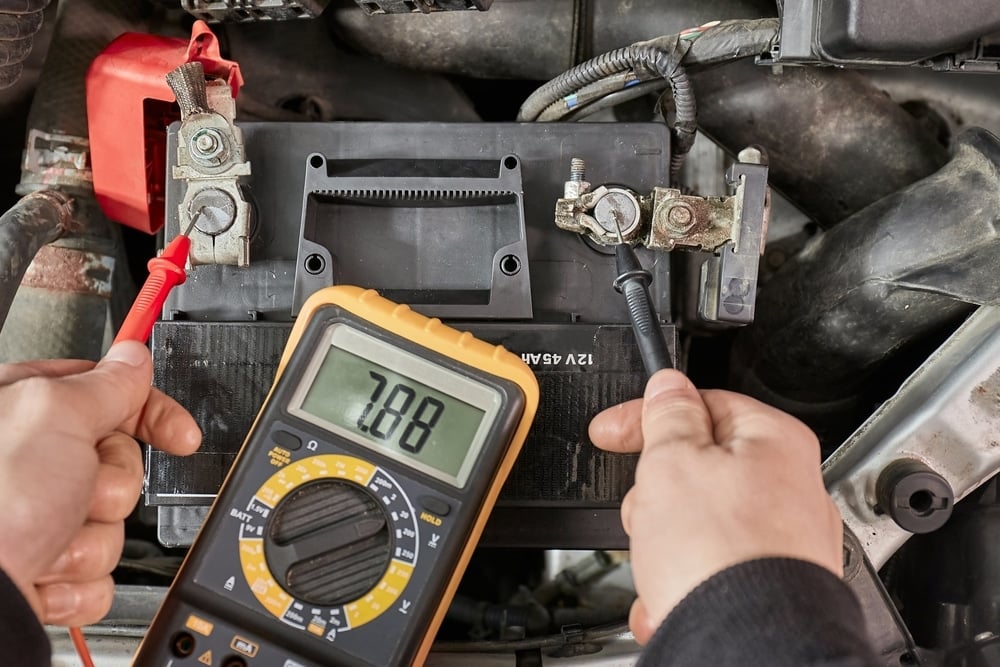
There’s always the chance that the problem is actually related to the car battery. Once the battery becomes too dead, the alternator can longer charge it, plus the light will come on.
The average car battery lasts three to five years. We recommend a regular inspection of the car battery to double-check that it’s in good working order, especially before winter, when the cold can take a toll on weak batteries.
6. Battery Terminal Corrosion
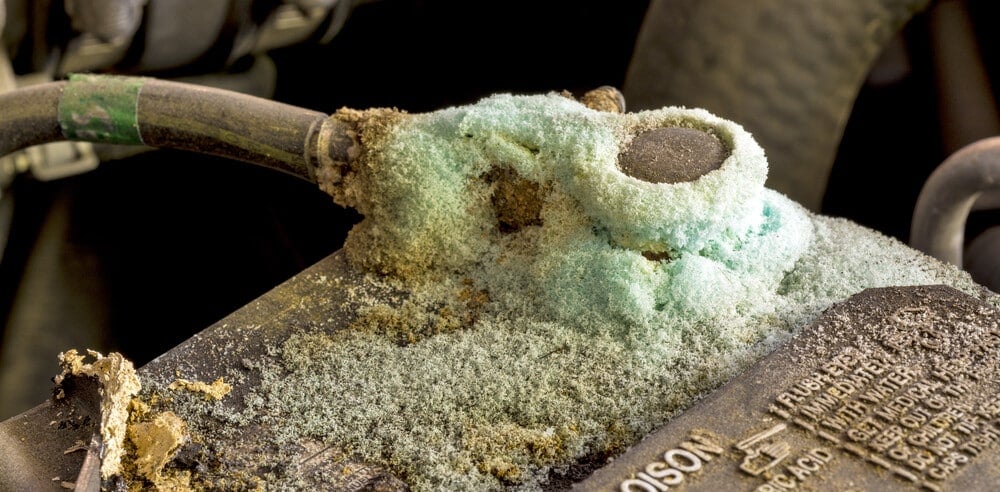
Sometimes a battery can’t be charged even though it’s in good condition. If there’s corrosion built-up on the terminals, the voltage coming from the alternator won’t be able to juice up the battery. Corrosion is caused when the hydrogen gas collides with the air.
You will notice it as the white or green-colored substance around the terminals and on the connectors. However, you don’t want to touch it because it’s highly caustic. We will discuss how to handle this problem deeper in a few minutes.
7. Bad Engine Ground Strap
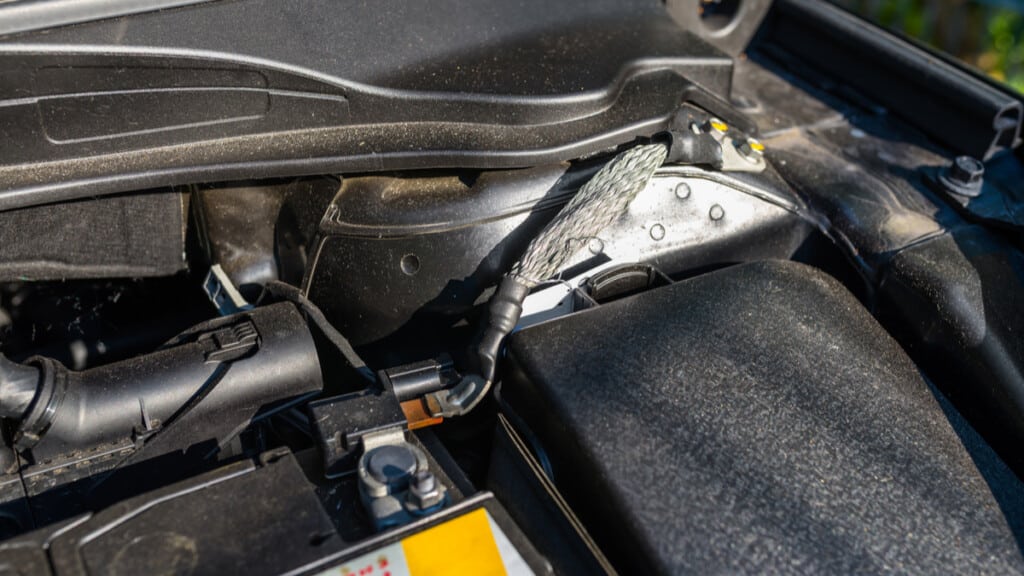
The engine ground strap is the connection between the battery’s negative terminal and the car body. It’s often referred to as the negative battery cable and it’s necessary to keep the electrical system running in the vehicle.
If the ground strap isn’t properly secured, you may notice flickering headlights, dashboard warning lights and there could be trouble charging the battery. It can also cause low voltage, problems starting the car and weird electrical system glitches.
How To Fix A Battery Light That’s On While Driving
At the first sign of the battery warning light, it’s best to pull the car off in a safe location to diagnose the system. You don’t want to keep driving because the battery and/or alternator could fail at any time. Once you have a place to look at the vehicle, follow these helpful tips.
1. Measure Charging Voltage While Engine Running

With your multimeter, you want to check the voltage of the battery while you keep the engine running. With the engine off, the battery should measure 12.6 volts. However, when the engine is running, the alternator should provide extra voltage, so that number should be higher.
In fact, a normal reading would be 13.5 to 14.5 volts. Anything lower or higher than this indicates a problem with the alternator.
2. Inspect The Alternator/Serpentine Belt
Heat, abrasion, oil and the environment can all take a toll on the serpentine belt. Plus, the pulley can start to wear against the belt, leaving behind visible damage if you look for it.
Once the belt gets 50,000 miles on it, you should check it regularly. If there’s any sign of wear or damage to the belt, you want to replace it. It’s especially important to replace any belt with cracks, splits or fraying before it fails.
You can also look for signs that the belt is glazed on the sides. If the belt becomes glazed, it can slip, crack or overheat. If you plan to replace the belt on your own, make a note of how the new one goes back on. There should be a diagram in the service manual or underneath the car hood.
3. Check The Wiring
It’s also important to perform a visual inspection of the wiring. You can trace all of the wiring from the battery to the alternator to see if there’s damage.
If you notice any damaged wires, it’s important to replace them right away. Make sure you also inspect the connectors where the wiring is attached.
4. Check the Battery
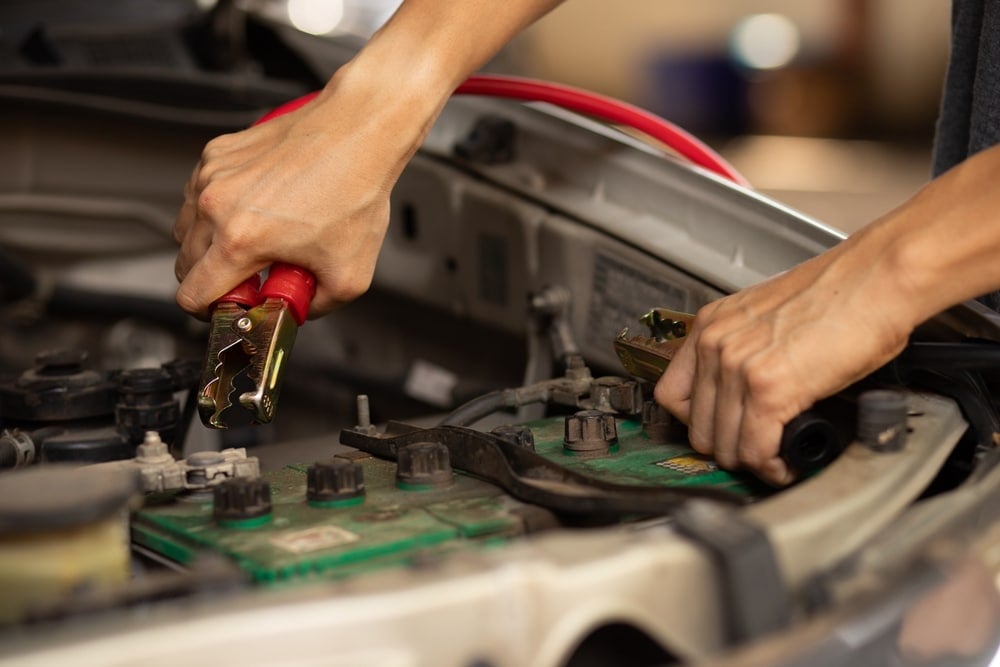
Don’t overlook the importance of checking the car battery regularly. You can use a multimeter to ensure the battery voltage measures 12.6 volts with the engine off.
If you don’t want to check the battery at home, you can get free battery testing at many auto parts stores. Many of these locations will also install the new battery for free when you purchase it through them.
5. Inspect Engine Ground And Battery Terminal Corrosion
Test the ground connection with these steps, just as we would in our very own shops.
- Set the voltmeter to read ohms to test resistance.
- Probe the negative terminal and ground connection.
- If the reading is less than five ohms, the ground connection resistance is good.
- Set the voltmeter to DC current to check voltage.
- With the accessories on, the voltage should not go higher than 0.5 volts under load.
- If there’s a place where voltage is present, a bonding strap needs to be added or you need a new grounding location.
Additionally, you can clean battery corrosion to ensure a proper connection.
- Sprinkle baking soda on the corrosion.
- With an old toothbrush dipped in lemon juice or vinegar, dab it over the baking soda to make it fizz.
- Leave it to sit for a few minutes.
- Scrub away the corrosion.
- Rinse it with some water.
To prevent corrosion, you can apply some battery-terminal grease on the posts. It’s simple to find at auto parts stores.
6. Contact A Professional
If any of these steps seem to be too complicated for your experience level, it’s best to reach out to a professional. We’ve seen many people do further damage to the charging system simply because they messed with things that shouldn’t be touched.
Additionally, there are some minor dangers associated with the working on the car battery and alternator. Because you are working with voltage, it’s best to refrain unless you are prepared to take all safety precautions necessary.
Can you drive your car with the battery light on?
The vehicle may still continue to run normally for a short time, so there would be nothing stopping you from driving even though the light is on. However, the car battery could die at any time, leaving you with a car that won’t run. For this reason, we recommend pulling over and fixing the problem right away.
Does battery light mean alternator?
It can indicate that something is wrong with the alternator and the battery isn’t getting the right charge. It could also show a problem with the battery, serpentine belt, alternator pulley, electrical connection or there’s a possibility of battery terminal corrosion. You may also want to check the ground connection.
Why is my battery light on, but the alternator is good?
The battery light indicates low voltage, showing trouble with the charging system. While it can mean a problem with the alternator, it could also be the battery, a connection, the alternator pulley, the serpentine belt or battery corrosion that’s creating trouble with charging.
How long can I go with my battery light on?
The time it takes for the battery to drain completely from when the light came on depends on several factors. The age and condition of the battery are the primary concern, while the issue causing the problem also plays a role. At most, you may have 30 to 60 minutes, but the car can stall at any time.
How do I know if my alternator is going bad?
When the alternator no longer provides enough voltage to the battery, the car battery is going to die. Additionally, some of the electronics in the vehicle may begin to malfunction or you could see flickering lights. If there’s a voltmeter on the dashboard, you’ll see the charge fall into the danger zone.
When your battery light comes on the dashboard, you don’t want to ignore it. While you may be tempted to continue driving, the car battery could fail at any time and the engine may stall. This situation puts you in danger, so you want to take prompt action.
We recommend having a professional look at the charging system if you aren’t used to working with these parts. If you are comfortable working on the system, it shouldn’t be difficult to figure out where the fault is and fix it.
Categories: Car Battery, Electric, Troubleshooting, Warning Lights

